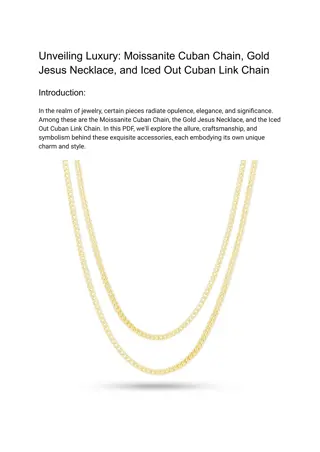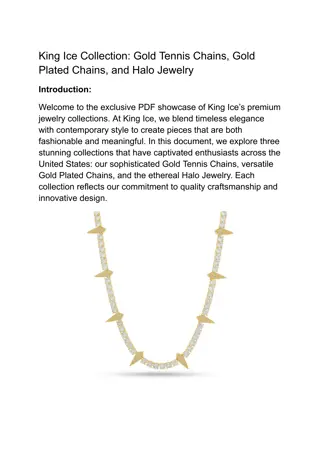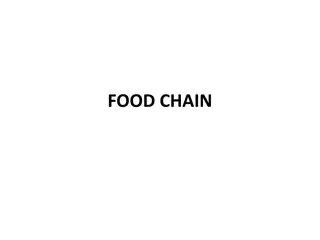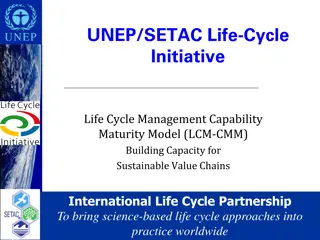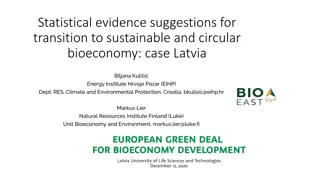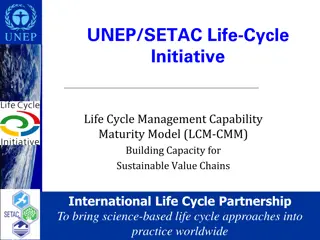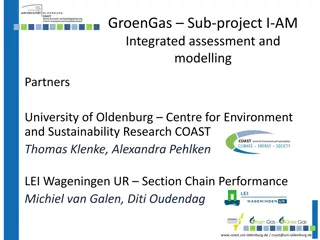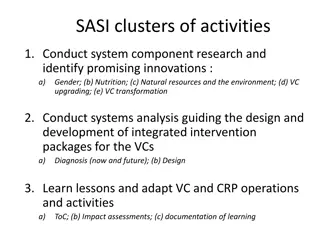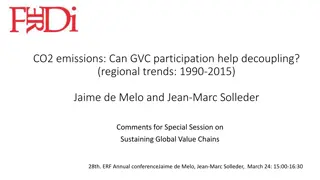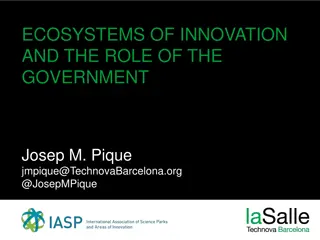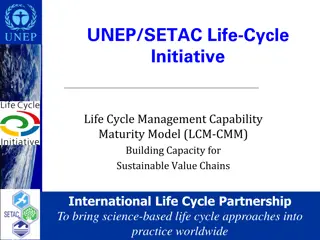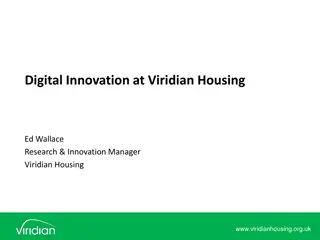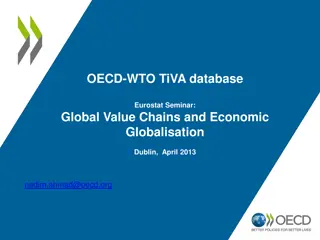Life Cycle Management for Sustainable Value Chains: Building Capacity and Promoting Innovation
This content delves into the Life Cycle Management Capability Maturity Model (LCM-CMM) aimed at enhancing sustainable value chains globally. It emphasizes the importance of bringing science-based life cycle approaches into practical implementation to address global issues, international standards, certifications, reporting, and learning curve challenges. The focus is on sustainability challenges, capability frameworks for balanced improvement efforts, and the significance of life cycle assessment (ISO 14040 & 14044) in making better decisions for improved performance. The content also explores how to make a business case considering external drivers impacting company value.
Download Presentation

Please find below an Image/Link to download the presentation.
The content on the website is provided AS IS for your information and personal use only. It may not be sold, licensed, or shared on other websites without obtaining consent from the author. Download presentation by click this link. If you encounter any issues during the download, it is possible that the publisher has removed the file from their server.
E N D
Presentation Transcript
UNEP/SETAC Life-Cycle Initiative Life Cycle Management Capability Maturity Model (LCM-CMM) Building Capacity for Sustainable Value Chains International Life Cycle Partnership To bring science-based life cycle approaches into practice worldwide
SUSTAINABILE VALUE CHAINS Global Issues, international standards, certifications, reporting
LEARNING CURVE CHALLENGE Today s Best Practices Incremental improvements to build capability 10 - 20 years of learning
SUSTAINABILITY CHALLENGE Global Issues, international standards, certifications, reporting Local concerns, development priorities Global logic of markets vs. Local logic of sustainability
Capability Framework Promotes Balanced Improvement Efforts Complements performance measures Fewer but targeted Quality control Aligns near term targets with longer term development need More fundamental concept that applies across industries, products & regions Focused Results Heroic efforts (Accountability) Performance Underutilized Investments Capability (Learning) 5
LIFE CYCLE ASSESSMENT ISO- 14040 & 14044 Goal and Scope Definition 1 4 Interpretation Inventory Analysis 2 Impact Assessment 3
BETTER DECISIONS & IMPROVED PERFORMANCE Use of diverse sources of information, Sensitivity to boundary definition and interconnections, Systemic view of problem, Causal analysis to promote innovative solutions, Inclusive process to resolve conflicts and build support, and Open communications to build trust and collaboration. Improved decision- making supports innovation, operational excellence, risk management
MAKING A BUSINESS CASE EXTERNAL DRIVERS IMPACT ON COMPANY CAPTURING VALUE Products / Customers New products & services, brand value Market restrictions Taxes- e.g. carbon tax Factories/ Communities License to operate, ease of permitting Improved process efficiency Employee morale, productivity Taxes, fines, liabilities Supply Chain Public campaigns, supply interruptions Liability for clean up Access to quality suppliers Public/ Communications Access to capital Recruitment & retention Reputation, brand value, stock P/E ratio Economic Income inequality Outsourcing jobs Trade imbalances Environmental Climate change- extreme weather, rising sea, 90 F days, crop damage Peak oil, price volatility Air quality- respiratory illness, asthma Resource depletion- e.g. rare earths Toxic chemicals Water scarcity, quality Land use Biodiversity & species extinctions Social Child, forced labor Supply chain mgmt in developing economies Socially responsible investors Fair trade Revenue Margin Cost of Sales ROIC Working Capital Invested Capital Fixed Capital
Life Cycle Management Capability Maturity Model (LCM - CMM) Level Span of control / influence Metrics Decision Process Business case Qualified Project Compliance- yes/no Process outputs Team-based, visible trade-offs Risk Avoidance; license to operate Efficient Enterprise Process inputs/ outputs Eco- efficiency Rule-based trade- offs to achieve enterprise goals Improved operating margins Labor & resource efficiency Effective Value chain Cradle to grave, integrated across value chain Fact-based to anticipate value chain trade-offs Top line growth, Innovative products, new markets Adaptive Society Sustainability measures Resiliency Value-based to co- develop business goals & social expectations Strong balance sheet Long- term competitive advantage
Continual Improvement Multiple P-D-L-A Cycles Capability Adaptive Scope Society Business case Capital preservation; sustainable prosperity Top line growth - Innovative products, new markets Process efficiency; improved margins Risk avoidance; license to operate Effective Value chain Efficient Company Qualified Facility/ Process Logical sequence of improvements based on experiences of global leaders to speed learning
Table of Contents 1. A Quick Tour 2. Competitive Context 3. Conducting a Maturity Assessment 4. Developing an Improvement Plan 5. Align Improvements with Business Strategy 6. Moving from Events to Management Systems




